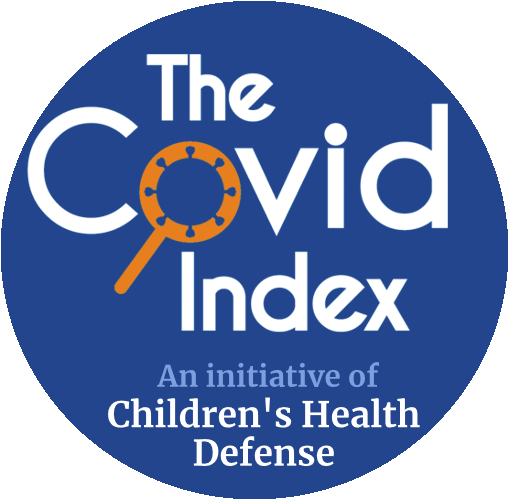"Abstract
Background: BNT162b2 RNA-based COVID-19 injections are specified to transfect human cells to efficiently produce spike proteins for an immune response.
Methods: We analyzed four German BNT162b2 lots applying HEK293 cell culture, immunohistochemistry, ELISA, PCR, and mass spectrometry.
Results: We demonstrate successful transfection of nucleoside-modified mRNA (modRNA) biologicals into HEK293 cells and show robust levels of spike proteins over several days of cell culture. Secretion into cell supernatants occurred predominantly via extracellular vesicles enriched for exosome markers. We further analyzed RNA and DNA contents of these vials and identified large amounts of DNA after RNase A digestion in all lots with concentrations ranging from 32.7 ng to 43.4 ng per clinical dose. This far exceeds the maximal acceptable concentration of 10 ng per clinical dose that has been set by international regulatory authorities. Gene analyses with selected PCR primer pairs proved that residual DNA represents not only fragments of the DNA matrices coding for the spike gene, but of all genes from the plasmid including the SV40 promoter/enhancer and the antibiotic resistance gene...
Introduction
... Already in 2021, it has been reported that the modRNA-induced spike proteins could be found circulating in the blood of vaccinees weeks after the injections. The presence of the spike protein was not limited to the injection site. These injections contain modified RNA designed to extend its lifetime in the cells and stop the natural process of destroying it. The modified RNA is transcribed into DNA and may be integrated into the cell’s genome. And finally, the lipid nanoparticles may contain DNA...
Discussion
... [W]e identified residual DNA including plasmid-DNA in amounts similar to that reported by McKernan et al. for US-Pfizer lots. DNA concentrations in the vials analyzed in this study ranged from 32.7 to 43.4 ng per clinical dose after eliminating RNA via RNase digestion. This far exceeds the maximal upper limit of 10 ng per clinical dose, which the WHO has declared to be tolerable in injectable biologicals...
Our molecular analyses of the plasmid components confirmed data reported by McKernan and colleagues, namely the presence of a DNA sequence of the SV40 promoter/enhancer. This sequence was not declared in the plasmid map that BioNTech/Pfizer submitted in the approval procedure. This finding is very surprising and raises the legitimate question: Why did BioNTech/Pfizer apply this totally unnecessary but highly dangerous element in their plasmids and use it as a template for the production of modRNA? In our opinion, BioNTech/Pfizer must be held accountable for incorporating this highly dangerous element in their plasmids...
Explicitly, one aspect should raise the alarm bell which is expressed by Dean et al.: 'The inclusion of this SV40 sequence in non-viral vectors may greatly increase their ability to be transported into the nucleus especially in non-dividing cells.' This transport of plasmids containing the SV40 promoter/enhancer element into the nucleus was found for a broad variety of cell types tested leading to the promotion of the SV40 promoter/enhancer element for highly effective gene therapy approaches. The detection of the SV40 promotor/enhancer sequences begs the question what intention the manufacturers had when selecting an expression system containing this mammalian cell active element instead of selecting a pure prokaryotic expression system for the manufacturing process ...
Conclusions: We demonstrated that transfection of the human cell line HEK293 with four different BNT162b2 lots results in the production of spike proteins over several days, which are released into the cell supernatant via exosomes. We detected residual plasmid-DNA in all vials at concentrations far exceeding the allowed EMA limit of 0.33 ng dsDNA per 1 mg RNA. We identified all plasmid genes as well as the two copies of the SV40 promoter/enhancer element. The DNA was shown to enter and persist in the cells...
The eternal dangers of all RNA biologicals are 4-fold: First, modRNA encoding any foreign protein will trigger detrimental autoimmune reactions. Second, the lipid nanoparticles are themselves highly toxic. Third, residual plasmid-DNA and reverse transcribed mRNA will genetically modify cells. Fourth, replacement of uridine in natural mRNA by N1-methyl-pseudouridine in synthetic modRNA causes +1 ribosomal frameshifting resulting in haphazard production of utterly alien proteins.
Our results confirm and extend published reports and raise grave concerns regarding the safety of the BNT162b2 vaccine. We call for an immediate halt of all RNA-based biologicals until these concerns are scientifically addressed and convincingly dispelled."
Terms and Conditions
https://publichealthpolicyjournal.com/terms-and-conditions/
As an open-access journal, we ensure that all published articles are freely available to the global community, enhancing the visibility and impact of authors’ work. Options for copyright transfer by IPAK-EDU, IPAK PHP, and Science Public Health Policy & the Law are not available.
Manuscripts are published under the CC BY 4.0 DEED Attribution 4.0 International https://creativecommons.org/licenses/by/4.0/ by the author.
